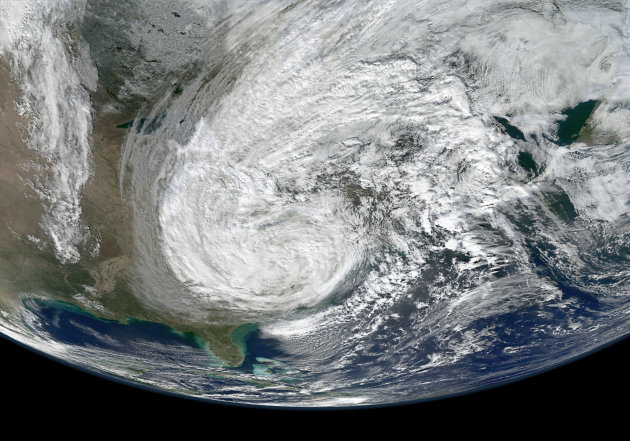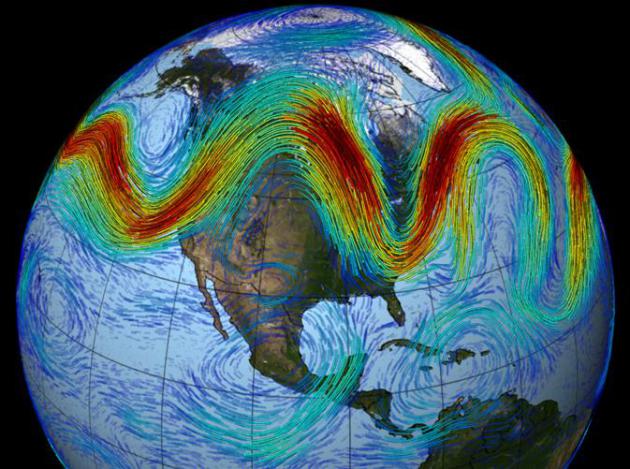44 F. average high on November 7.
50 F. high on November 7, 2015.
November 8, 1999: A November 'heat wave' impacts much of the state. Temperatures in the 70's and 80's are recorded in Minnesota with records shattered in many places. The Twin Cities had 73 degrees, while Canby saw 82.
November 8, 1943: A severe ice storm hits the Twin Cities, and heavy snow falls over southwest Minnesota. One person died in St. Paul as a trolley car slid off the tracks and hit a pole. A Minneapolis man died shoveling snow. Many telephone poles were down due to the ice. Places like Worthington, Windom, and Marshall saw 14 to 16 inches of snow.
November 8, 1870: The first storm warning for the Great Lakes is issued by the U.S. Army.
No Good Meteorological Reason Not To Vote Today
Can we pause the inevitable Election Day babble and talk (gawk) about the weather instead? Lawn mowing, fishing and boating into mid-November - in Minnesota? You must be taking fistfuls of crazy-pills!
This is what a warming atmosphere looks like: more numerous glimpses of head-shaking, jaw-dropping, "never seen that before" weather. Earth's low-grade fever will have silver linings for Minnesota: more years like 2016, with the longest growing season on record, dating back to 1872.
An unusually persistent bubble of warm high pressure adrift over the Plains is a rare 3-sigma event, statistically 3 standard deviations from normal, "highly anomalous, outside the 30-year climate record", according to NOAA scientists. That means 60 degrees Wednesday and Thursday; EMCWF guidance hints at more 60s next weekend for much of Minnesota.
Temperatures may finally fall below 32F in the immediate metro for the first time late next week; a full 6 weeks later than average.
Whatever 'average' is these days.
No big storms of any flavor are brewing. Winter is still coming, but a full 1-2 months late this year.
Oh, and don't forget to vote. This too shall pass.
Here is a look at predicted weather for Tuesday across the USA, data courtesy of NOAA and Aeris AMP:
Does The Switch to Daylight Saving Time Increase Risk of Depression? Here's an excerpt of an interesting article focusing on new studies, courtesy of The Washington Post: "...One possible explanation is that the sudden advancement of sunset from 6 p.m. to 5 p.m . . . which in Denmark marks the coming of a long period of very short days, has a negative psychological impact on individuals prone to depression, and pushes them over the threshold to develop manifest depression,” the authors write. We know, for instance, that long days and ample sunshine are protective against depressive symptoms. The shift to standard time essentially steals an hour of daylight from the evening, when most of us are awake, and tacks it on to the early morning hours, when many of us are not. The net effect is that many of us lose an hour of daylight..."
What To Expect This Winter: NOAA's 2016-2017 Winter Outlook. La Nina is one of several factors capable of nudging our weather in a specific direction this winter. Odds are it won't be as mild as last winter; beyond that the crystal ball gets murky in a hurry. Here's an excerpt of a good explainer from Mike Halpert at NOAA's Climate.gov: "...So while the southern (and especially southeastern) part of the U. S. is often wetter and colder than average during El Niño winters, La Niña generally favors below-average precipitation and above-average temperatures in those same regions. We also often see opposite patterns across the northern part of the nation, with warmer and drier conditions during El Niño winters and colder and wetter conditions during La Niña years. Before discussing the actual winter outlook, I want to remind readers that these are probabilities (% chance) for below, near, or above average seasonal climate outcomes with the maps showing only the most likely temperature or precipitation outcome (footnote 1). Because the probabilities shown are less than 100%, it means there is no guarantee you will see temperature or precipitation departures that match the color on the map..."
Map credit: "Typical impacts of La Niña on U.S. winter temperature and precipitation. Such impacts have been associated with past episodes, but all impacts aren't seen with every episode." NOAA Climate.gov drawing by Fiona Martin.
Hurricane Intensity Is Not Exaggerated To Scare People, And Here's How We Know. When data and evidence gets in the way some resort to conspiracy theories. Besides, it makes for good click-bait. Hurricane expert Brian McNoldy responds to Matt Drudge at Capital Weather Gang: "Hurricane Matthew brushed the East Coast as a Category 4 in early October. It scoured the Florida coast with a storm surge that washed out roads and flooded homes and businesses. It dumped over a foot of rain on the Carolinas and triggered deadly flooding. And before all of this, Matthew devastated Haiti and killed at least 600 people — it’s possible we’ll never know the final death toll. But the hurricane’s deadly encounter with Haiti and multibillion-dollar brush with the East Coast wasn’t bad enough for some people — mainly, Matt Drudge, a political commentator and news aggregator, who tweeted skepticism about Matthew’s actual intensity as it barreled toward Florida. Perhaps, he suggested, the National Hurricane Center was overhyping the storm’s maximum winds..." (Hurricane Matthew file photo: NOAA).

Hurricane Sandy Was a 260 Year Storm - Here's What That Means.
For the record 2012's Superstorm Sandy wasn't even (technically) a
warm-core hurricane when it struck New Jersey. But the storm was huge,
it carved out an impressive storm surge that hit at astronomical high
tide during a full moon. Here's an excerpt from Yahoo Finance: "... The
total damage to New York City was worth $19 billion and to New Jersey
$29 billion. Now, the big question is: How likely is it that a
Sandy-level storm will happen again in our lifetimes? In the past,
studies have pegged Sandy as anywhere from a 100-year storm to a 1,500
year storm. That means that in any given year there's a 1/100 to 1/1,500
chance of a storm causing Sandy-level flooding. A new paper accepted
for publication in the Journal of Geophysical Research
October 21 offers a more precise estimate: Sandy was a 260-year storm,
based on current ocean conditions. That includes tropical cyclones like
Sandy as well as winter storms like northeasters, lead author Philip
Orton, who studies ocean physics at the Stevens Institute of Technology,
told Business Insider..." (Superstorm Sandy file image: NASA).
Oklahoma Storm Shelter For School Said To Withstand EF-5 Tornado. I wonder if any man-made structure can be constructed to be "tornado-proof"? I found this story from WTVY-TV to be interesting; here's a clip: "...The superintendent hopes to build more of these, one for each elementary school. The building is said to be able to withstand an F-5 tornado. It has a monolithic dome, a round roof made of reinforced steel and layer after layer of concrete, making it one of the safest places to be during a natural disaster..."
New Weather Satellite Set to "Revolutionize" The U.S. Weather Forecast.
That may be a bit strong, but there's little doubt that GOES-R is
another big step forward, giving us a much more powerful,
high-resolution eye in the sky. Details via Yahoo Finance: "...NASA
is currently preparing the launch pad at Cape Canaveral to send the
first satellite, known as GOES-R, into orbit on November 16 at 4:42 p.m.
ET. According to NOAA, the new weather station will contribute to more
accurate weather forecasts and better predictions of severe storms.
"Without a doubt, GOES-R will revolutionize weather forecasting as we
know it," Stephen Volz, assistant administrator for NOAA's Satellite and
Information Service, told reporters earlier this month. "For weather
forecasters, GOES-R is like going from black and white television to
super-high-definition TV, and for the American public GOES-R will mean
faster, more accurate weather forecasting and warning..." (Artist sketch of GOES-R: Lockheed Martin).
Photo credit: "Technician Clinton Maldoon checks on the Geostationary Lightning Mapper at Lockheed’s Advanced Technology Center." Santiago Mejia, The Chronicle.
Oil Industry's New Threat? The Global Growth of Electric Cars. Odds are our kids and grandkids won't think twice about driving an electric vehicle. Here's an excerpt from The New York Times: "...Could
the world’s transportation system be on the verge of a disruption, one
that could slow the growth of oil demand and eventually reverse it? That
question is not just profound, it is urgent. Nations have pledged to
fight global warming,
which means sharply paring emissions of carbon dioxide and other
greenhouse gases by midcentury, just over three decades away. If that is
to be achieved, some studies suggest, there will be no place for cars
burning gasoline or diesel. They will have to run on electricity, or
possibly another alternative fuel, and the electric system itself will
have to become much cleaner..."

ELECTION DAY: A slightly cooler front; intervals of sun, dry. Winds: NW 8-13. High: 55
TUESDAY NIGHT: Clear to partly cloudy. Low: 39
WEDNESDAY: Sunny, breezy and milder again. Winds: S 8-13. High: near 60
THURSDAY: Mild start, then slowly cooling off. Winds: W 10-20. Wake-up: 48. High: 63
FRIDAY: Cool sunshine. Winds: NE 5-10. Wake-up: 40. High: 52
SATURDAY: Mild sun, another glimpse of September. Winds: S 10-20. Wake-up: 37. High: near 60
SUNDAY: Blue sky, winter still on hold. Winds: W 8-13. Wake-up: 48. High: 62
MONDAY: Clouds, few rain showers possible. Winds: NW 8-13. Wake-up: 44. High: 53
Climate Stories. Because weather and climate are flip-sides of the same coin.


Pentagon Report: U.S. Military Considers Climate Change a "Threat Multiplier" That Could Exacerbate Terrorism. Here's an excerpt from Newsweek: "A
report released Monday indicates the Department of Defense has
dramatically shifted its views towards climate change, and has already
begun to treat the phenomenon as a significant threat to national
security. Climate change, the Pentagon writes, requires immediate action
on the part of the U.S. Military. The report
is a “roadmap” of the Department’s future needs and actions to
effectively respond to climate change, including anticipating that
climate change may require more frequent military intervention within
the country to respond to natural disasters, as well as internationally
to respond to “extremist ideologies” that may arise in regions where
governments are destabilized due to climate-related stressors..."
No comments:
Post a Comment